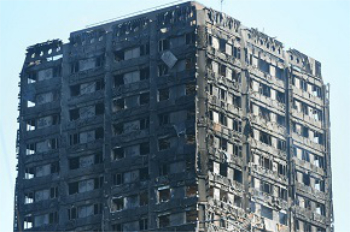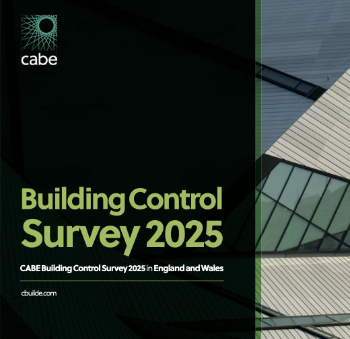Green Construction Board
An innovation and growth team (IGT) was established within the Department for Business Innovation & Skills (BIS) in 2009 to answer the question; ‘is the construction industry fit for purpose for the transition to a low carbon economy?’ The review steering group was chaired by Paul Morrell, the then Chief Construction Adviser.
Emerging Findings were published in March 2010, and the final report Low Carbon Construction IGT was published in November 2010. A government response to the report Government response to the Low Carbon Construction Innovation & Growth Team Report was published in June 2011. The action plan contained in this response proposed the creation of a joint government and industry board to take forward the programme, and as a result, the Green Construction Board (GCB) was established in 2012.
The GCB is the sustainability workstream of the Construction Leadership Council ( an industry / government council established in 2013 to oversee implementation of Construction 2025: industrial strategy for construction) and its role is to: '...provide leadership and action to enable the whole value chain (clients, contractors, product manufacturers, suppliers and others) to become more environmentally sustainable, more productive and better placed to exploit the growing global market.'
Its original terms of reference stated that; ‘The Green Construction Board is a consultative forum for Government and the UK design, construction and property industry in order to ensure a sustained high level conversation and to develop and implement a long term strategic framework for the promotion of innovation and sustainable growth. The Board owns, and will monitor implementation and build on, the joint Government / industry Action Plan contained in the Government’s response to the Low Carbon Construction Innovation and Growth Team report (the Action Plan).’
Members of the Board are senior industry and government representatives and others with expertise in appropriate fields. They are invited to join on a voluntary basis by the joint chairs.
The Green Construction Board describes its purpose as:
- Providing co-ordinated leadership across government and industry on the issues contained in the action plan.
- Monitoring the delivery of, and developing the action plan.
- Considering and advising on potential policy implications.
- Acting as a sounding board for government departments.
- Advising on the implementation of policies and identifying sector specific implications and consequences.
- Directing attention of the industry and government to the need for new knowledge or research.
- Promoting UK achievements and providing a public voice on its wider value to the economy, society and the environment.
As part of this process, the Board has developed the Low Carbon Routemap which provides ‘…a visual tool that enables stakeholders to understand the policies, actions and key decision points required to achieve an 80% reduction in greenhouse gas emissions in the built environment vs 1990 levels by 2050.’
In February 2014, the Green Construction Board announced that it would continue its work for a further 2 years. Ref Gov.uk Green Construction Board to continue its role in reducing carbon emissions.
On 4 November 2015, a 'refreshed' GCB met for the first time to discuss how it would deliver on its two main priorities:
- Championing, leading and supporting action to reduce greenhouse gas emissions from infrastructure, domestic (housing) and non-domestic built environment sectors, in line with the pathway outlined in the Low Carbon Routemap (reductions of greenhouse gases by 50% by 2025 and 80% by 2050) and report on progress.
- Supporting the construction sector to move towards a circular economy business model to improve resource efficiency and productivity.
Nick Boles said “The new Green Construction Board members bring together some of the best expertise in industry. The refreshed Board will build on the work of the new Construction Leadership Council, delivering its sustainability agenda to help the UK achieve a more low carbon built environment.”
On 15 December 2015, the Green Construction Board published, Low Carbon Routemap for the Built Environment, 2015 Routemap Progress | Technical Report. This updated the Low Carbon Routemap for the Built Environment prepared in 2013 aimed at delivering an 80% cut in UK built environment carbon emissions by 2050 compared to 1990 levels.
It found that annual emissions in the UK had actually increased since 2009, primarily due to an increase in gas consumption from heating. The report states “There has been a growing divergence occurring over just a few years (2009 through 2013). Given the steepness of the trajectory required to meet the ambition for built environment carbon reductions (and statutory targets for the UK as a whole), a significant transformation from the ongoing ‘status quo’ trajectory is needed.”
It also found a slight increase in ‘capital carbon’, suggesting “The data provides no evidence of a trend driven by efficiencies or process improvements in design, manufacturing or the supply chain."
[edit] Related articles on Designing Buildings Wiki
- Climate change Act.
- Construction 2025.
- Construction Leadership Council.
- Earth overshoot day.
- Energy Act.
- Energy Performance Certificates.
- Energy Related Products Regulations.
- Energy targets.
- Government Construction Strategy.
- Intergovernmental Panel on Climate Change.
- Low carbon construction IGT
- Mean lean green.
- Sustainability.
- Sustainable materials.
- UK Green Building Council.
- Zero carbon homes.
- Zero carbon non-domestic buildings.
[edit] External references
- Green Construction Board.
- Low Carbon Routemap.
- Emerging Findings.
- Low Carbon Construction.
- Government response to the Low Carbon Construction Innovation & Growth Team Report.
- Gov.uk Green Construction Board to continue its role in reducing carbon emissions.
- Building, Government unveils refreshed Green Construction Board. May 2014.
Featured articles and news
Grenfell Tower Principal Contractor Award notice
Tower repair and maintenance contractor announced as demolition contractor.
Passivhaus social homes benefit from heat pump service
Sixteen new homes designed and built to achieve Passivhaus constructed in Dumfries & Galloway.
CABE Publishes Results of 2025 Building Control Survey
Concern over lack of understanding of how roles have changed since the introduction of the BSA 2022.
British Architectural Sculpture 1851-1951
A rich heritage of decorative and figurative sculpture. Book review.
A programme to tackle the lack of diversity.
Independent Building Control review panel
Five members of the newly established, Grenfell Tower Inquiry recommended, panel appointed.
Welsh Recharging Electrical Skills Charter progresses
ECA progressing on the ‘asks’ of the Recharging Electrical Skills Charter at the Senedd in Wales.
A brief history from 1890s to 2020s.
CIOB and CORBON combine forces
To elevate professional standards in Nigeria’s construction industry.
Amendment to the GB Energy Bill welcomed by ECA
Move prevents nationally-owned energy company from investing in solar panels produced by modern slavery.
Gregor Harvie argues that AI is state-sanctioned theft of IP.
Heat pumps, vehicle chargers and heating appliances must be sold with smart functionality.
Experimental AI housing target help for councils
Experimental AI could help councils meet housing targets by digitising records.
New-style degrees set for reformed ARB accreditation
Following the ARB Tomorrow's Architects competency outcomes for Architects.
BSRIA Occupant Wellbeing survey BOW
Occupant satisfaction and wellbeing tool inc. physical environment, indoor facilities, functionality and accessibility.
Preserving, waterproofing and decorating buildings.






















